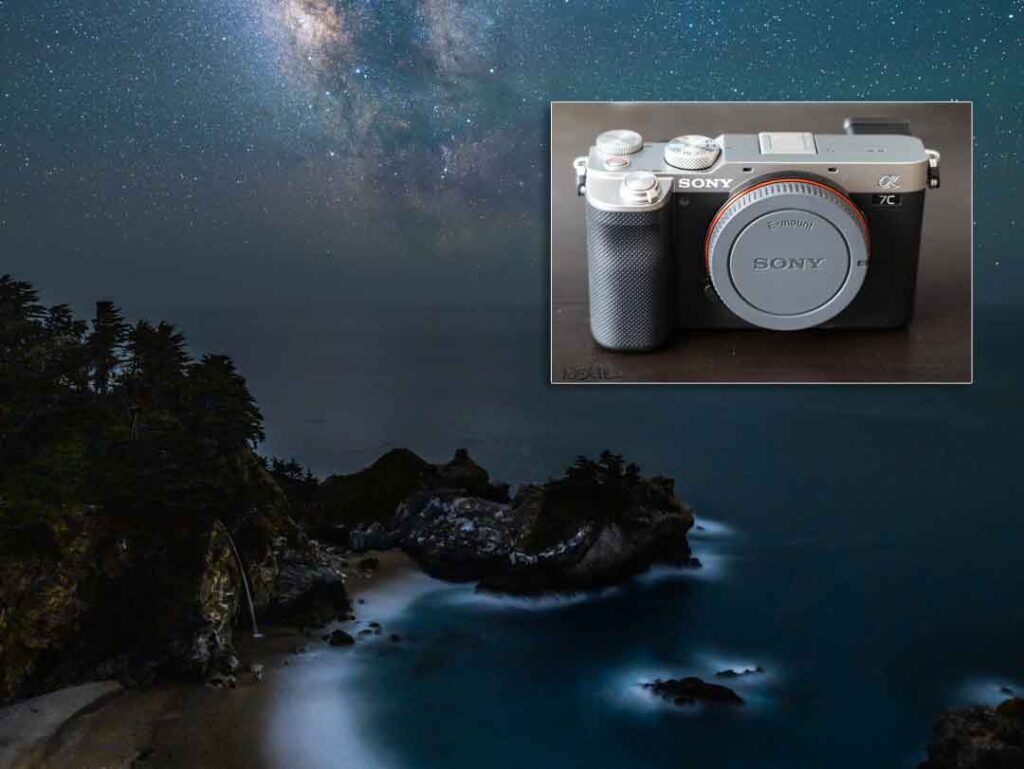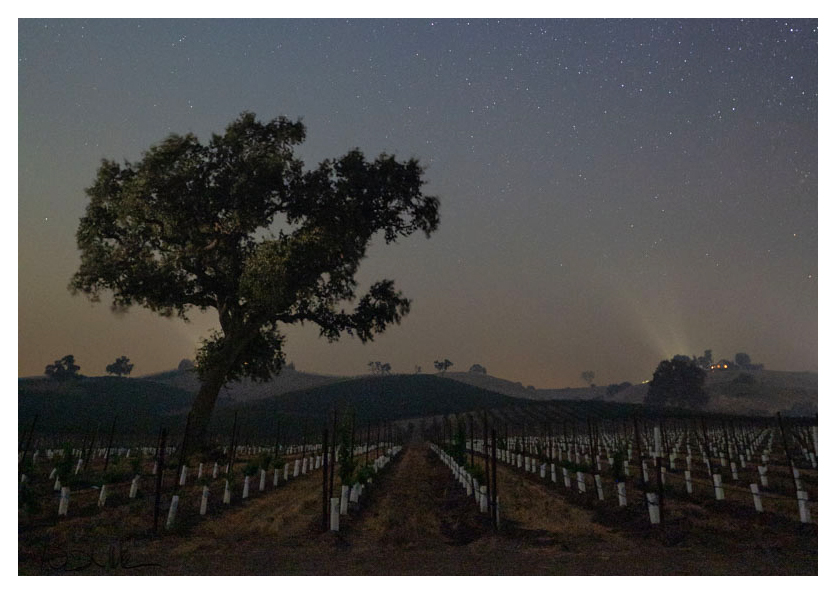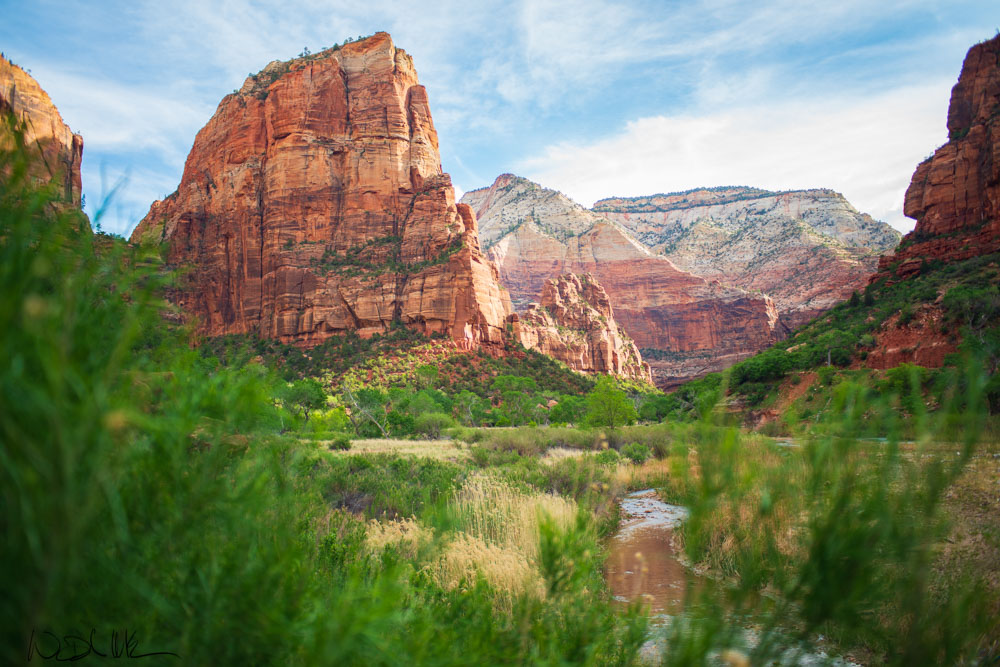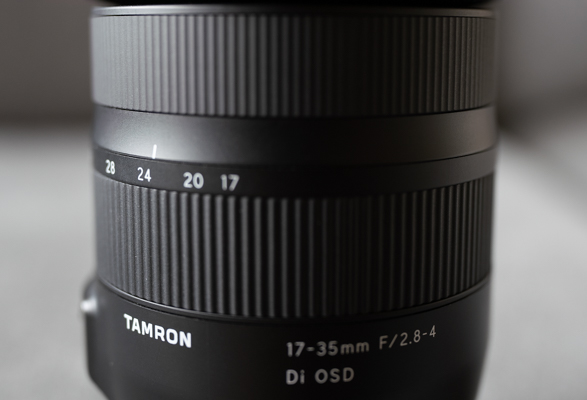For years, Sony has been a leading brand for astrophotography. I’ve used the A7rii, A7riii, and A7iii but switched to the Sony A7c, and I think it’s one of the best cameras in Sony’s lineup. I’ve used it for youtube, vlogging, travel, weddings, and landscapes.
But is it any good for astrophotography?
Yes!
The A7c is one of the bests cameras for astrophotography, because of its settings, sensors, lens selection, and it has a form factor that’s perfect for star tracking.
Related posts
- How to photograph the night sky and Aurora like a pro
- The best lightweight star tracker
- Best budget lens for astrophotography
Bright monitor mode
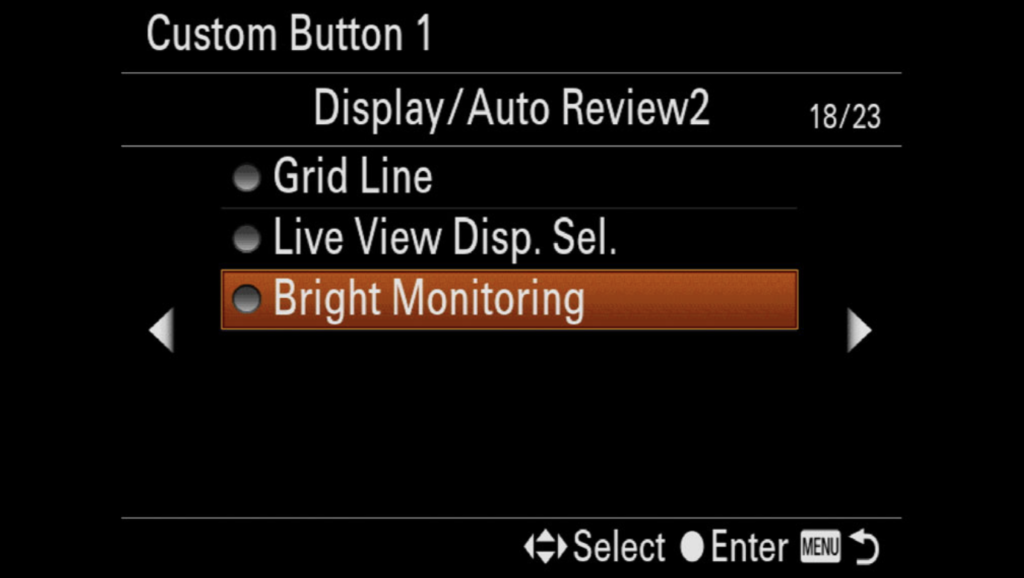
Sony’s bright monitor mode is game changing. It’s why I only shoot with Sony for astrophotography.
Bright monitor mode helps you maximize the light coming in your sensor, so you can see in the dark. If I can’t see a composition at night, I turn on bright monitor mode. If I can’t see where I’m walking, I turn on bright monitor mode.
I use it as a custom button on my center button, and I’d feel lost without it.
Some people don’t like the A7c because it doesn’t have a great EVF, but for astrophotography you don’t really need it. I was shooting with a higher resolution sensor with the A7riii, and didn’t notice much of a difference.
The best camera sensor for astrophotography
The A7C and A7iii have the same sensor, and it’s one of the best sensors for astrophotography because of its low light capabilities and great pixel pitch.
You might be tempted to have a high megapixel sensor for astrophotography, but I think the sweet spot is 24 megapixels. You’ll get more megapixels with the A7iv or A7Riv, but larger sensors are more sensitive to movement in the night sky and will require faster shutter speeds.
When shooting stars with a faster shutter speed, you get sharper stars but less light hitting your sensor. The sensor on the A7c is the same as the A7iii. It’s great for low light and will allow you to slow down your shutter speed and still get sharp stars.
The A7C is also one of the best cameras for low light. You’ll notice more noise with almost any other camera (A7riii, A7riv, Canon RP). The only full-frame camera with a better sensor is the A7siii, but it only has 12 megapixels.
In 2005, pro-level photographers were shooting magazine covers with 6 megapixels. I’m not opposed to 12 megapixels, but I’ve been spoiled with higher megapixel cameras for too long.
A7c lenses for astrophotography
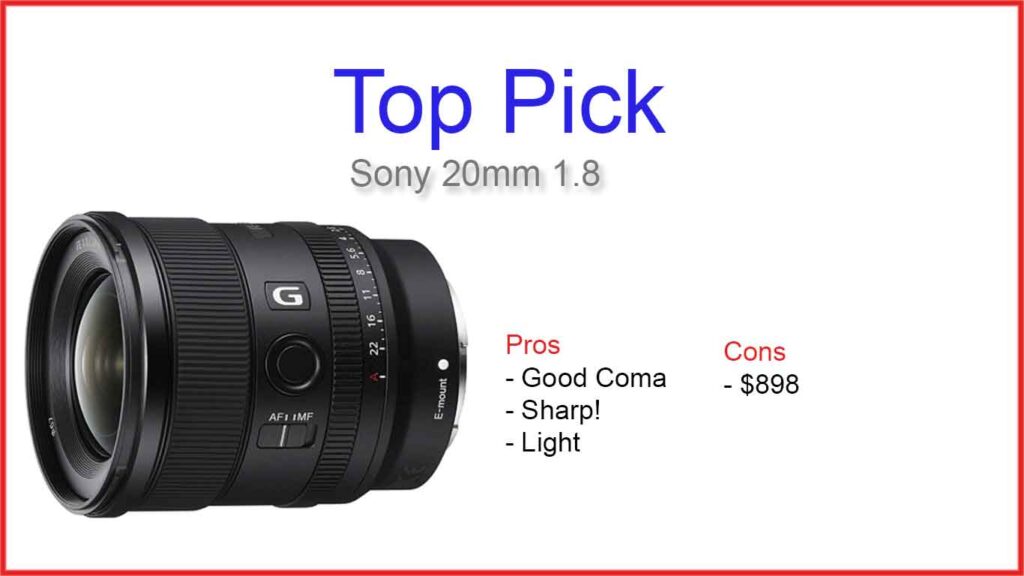
My favorite lens for astrophotography is the Sony 20mm 1.8, but I also love my 24mm 1.4 GM. I think the coma performance is slightly better with the 20mm 1.8, and it’s the perfect focal length for the milky-way.
These are the other lenses I’m currently using for astrophotography.
- Tamron (Canon) 17-35 2.8-f4 with MC-11 adapter
Check out the rest of my astrophotography gear.
The best camera for star tracking
The A7c is also a great camera for star tracking because it’s lightweight. Most star trackers have weight restrictions, and this isn’t a problem with the size of the A7c.
For star tracking, I use the A7c with the Tamron 17-35 2.8-4 and an MC-11 adapter. I think Tamron stopped making this lens, but It’s my favorite lens for tracking, because it has the best coma performance. It does have vignette issues, but there’s an easy fix for it here.
I usually use this camera and lens combo with the MSM star tracker. It’s super light and great for shooting the milky way.
The most affordable sony camera for astrophotography
The Sony A7c isn’t just a great full frame camera, it’s affordable. At $1800, it’s about the same price as the A7iii. I like it more because of the faster autofocus, video autofocus, and small form factor.
If you’re on a budget, you might also think about the Nikon z5. It has the same low light sensor and great ergonomics, but it doesn’t have bright monitor mode.
Conclusion
The Sony A7c is a great performer for astrophotography. It has pro-level performance with bright monitor mode, an amazing sensor, great lens options, and it’s affordable. It’s perfect for star tracking, and it’s the perfect small travel companion for those dark nights.
I hope you found this article helpful. Subscribe below to learn more about what’s next in photography.

